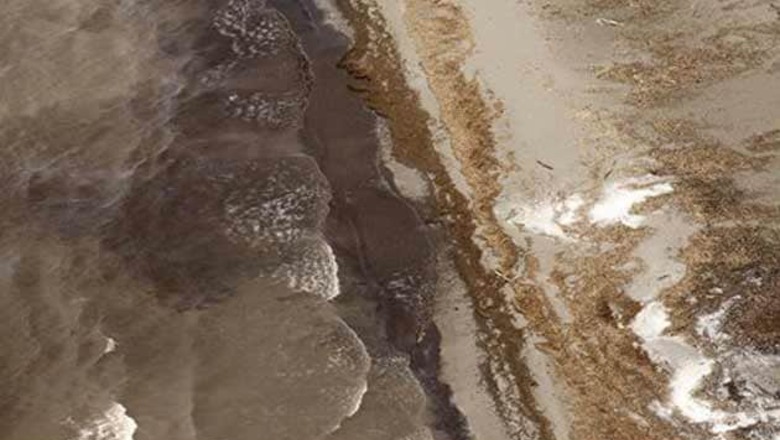
views
Venice, La: President Barack Obama will meet with the leaders of a panel he created to probe the worst oil spill in US history on Tuesday, as a giant slick from BP's blown-out Gulf of Mexico well poses a new threat to the coasts of Mississippi and Alabama.
The spill, which has eclipsed the 1989 Exxon Valdez disaster as the biggest in US history, entered its 43rd day as British Petroleum (BP) Plc prepared a new and untested plan to use a dome to funnel oil gushing from a well a mile (1.6 km) beneath the sea to a tanker on the surface.
Obama, criticized by Louisiana officials for being slow to react to the spill, will hold his first meeting with co-chairs of an oil spill commission he established to make policy recommendations about U.S. offshore oil drilling.
The commission will be similar to those that looked into the explosion of the space shuttle Challenger in 1986 and the Three Mile Island nuclear accident in 1979.
US Attorney General Eric Holder will meet with federal prosecutors and state attorneys general in New Orleans. It will be Holder's first trip to survey the damage before what legal experts believe will be a criminal investigation into the disaster.
BP's stock has lost nearly a quarter of its value since the oil spill started six weeks ago, wiping nearly 29 billion pounds ($ 42 billion) off BP's market value, according to Reuters data.
Although Louisiana's wetlands and fishing grounds have been the worst hit so far by the spill, the National Oceanic and Atmospheric Administration said moderate southerly and southwesterly winds this week may start moving oil closer to the Mississippi and Alabama coasts.
"Model results indicate that oil may move north to threaten the barrier islands off Mississippi and Alabama later in the forecast period," NOAA said in its 48-hour prediction on the expected trajectory of the huge oil slick.
The slick has spread over 100 miles (160 km) of Louisiana's fragile coast but Mississippi and Alabama have escaped lightly so far, with only scattered tar balls and oil debris reaching its coasts.
But the NOAA forecast was a sober reminder that oil from the unchecked spill, broken up and carried by winds and ocean currents, could threaten a vast area of the U.S. Gulf Coast, including tourism mecca Florida, as well as Cuba and Mexico.
Hurricane season
The public anger and frustration over the spill poses a major domestic challenge for Obama, who has been forced to admit publicly that the US government and military do not have the technology to plug the leaking well and must leave this to BP and its private industry partners.
Obama, who made his second visit to the Gulf disaster zone on Friday, is sending three of his top energy and environmental officials back there this week. He is trying to fend off criticism that his administration acted too slowly in its response to the spill.
In Venice, known as "Tuna Town" for its booming fishing business, the spill dampened business over the US Memorial Day holiday when charters are normally in high demand.
"Just since about last Wednesday, we probably lost 150,000 (dollars) that we didn't take in, you know, fuel, ice, bait," said Bill Butler, co-owner of Venice Marina.
US government and BP officials warn that the blown-out deepwater well feeding the catastrophic spill may not be shut off until August, when BP expects to finish a relief well.
Scientists estimate the well is leaking 12,000 to 19,000 barrels (504,000 to 798,000 gallons/1.9 million to 3 million liters) of oil per day.
Raising the stakes even higher, Tuesday is the official start of the 2010 Atlantic hurricane season, which US forecasters say may be the most intense since 2005, when Hurricane Katrina ravaged the region and disrupted offshore oil and gas production.
A hurricane churning through the Gulf could drive more oil ashore and force BP and the US government to suspend cleanup efforts.
After two previous attempts to plug or contain the well failed, BP is preparing a containment cap to place on top of a lower marine riser package, a piece of equipment that sits atop the failed well blowout preventer on the seabed.
BP said it will deploy the system this week, and has a plan to boost the amount of oil and gas the device can capture at the seafloor and funnel to the surface, which might be ready in mid-June.




















Comments
0 comment